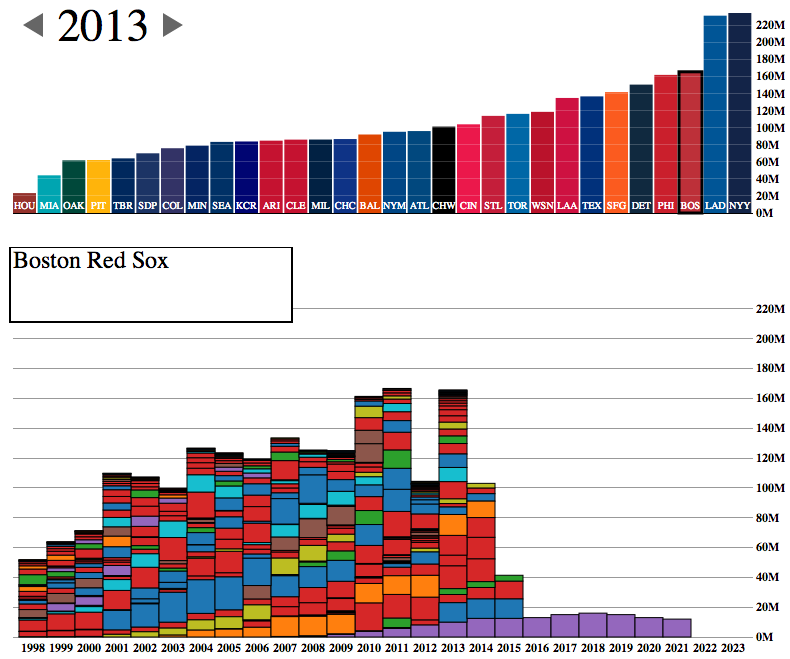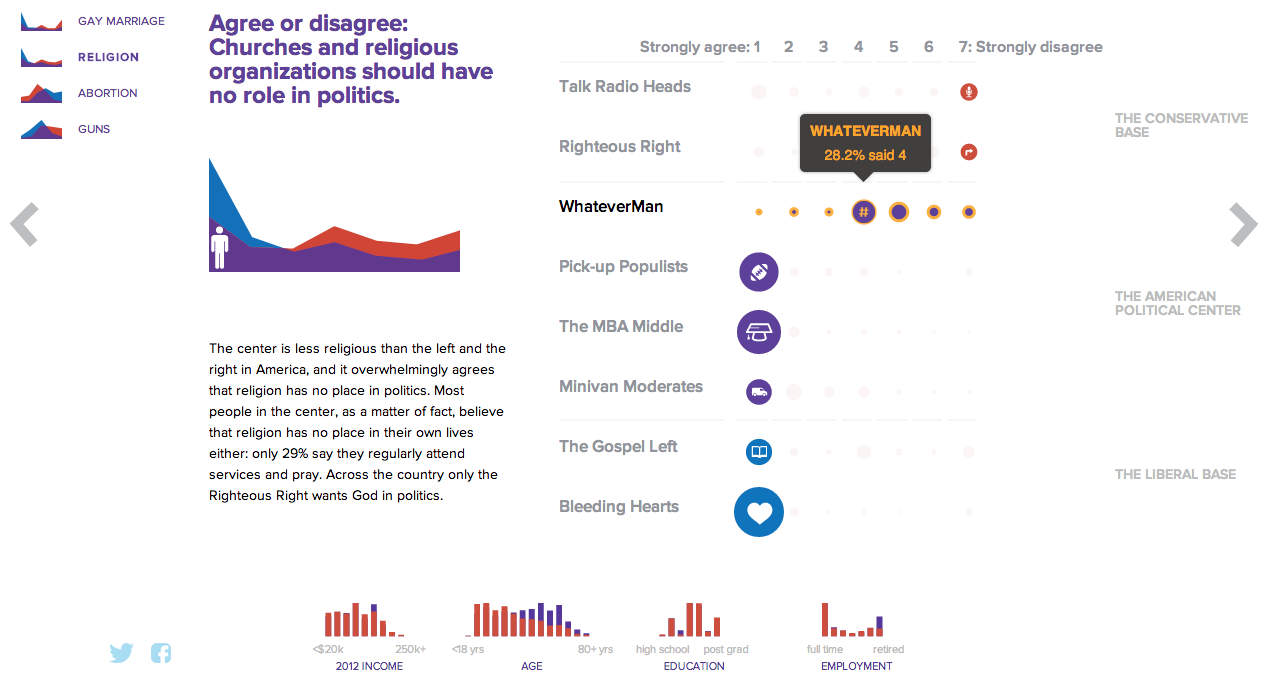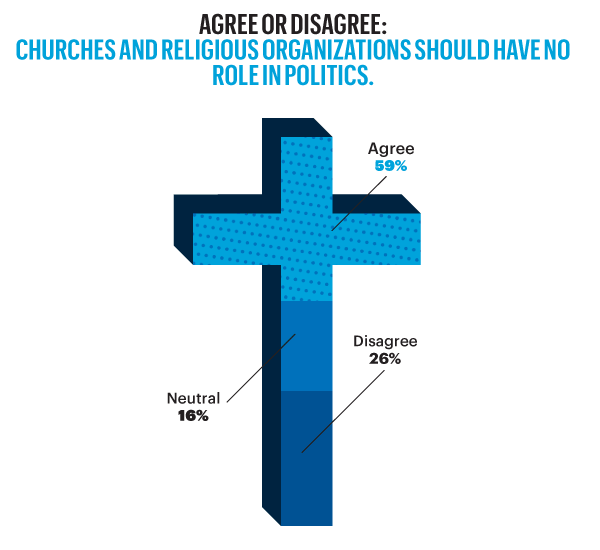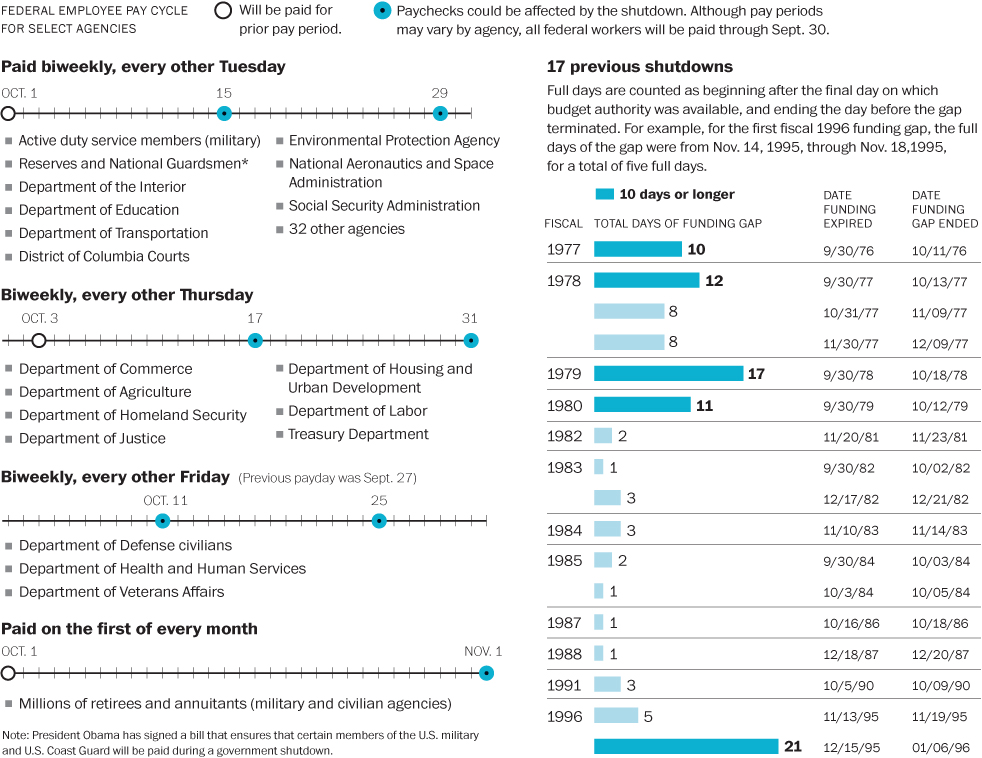The World Series starts tomorrow night and for all but two teams, that means focusing on the upcoming 2014 roster. And rosters are often defined by payroll flexibility. A co-worker of mine forwarded along today’s interactive graphic that looks at team payrolls through stacked bar charts.

The design is certainly a bit clunky with heavy black outlines and garish colours. But the story told is clear, especially if you begin to look at different teams. Which teams have players locked up for the long-term and thereby have little flexibility?
The Red Sox, of course, sent most of that bar from 2011 to the Los Angeles Dodgers near the end of 2012. That allowed them to pick up the free agents like Mike Napoli, Johnny Gomes, Shane Victorino, and Koji Uehara. You know, the guys without whom the Red Sox would not have advanced to the World Series.
Credit for the piece goes to Phil Roth.










